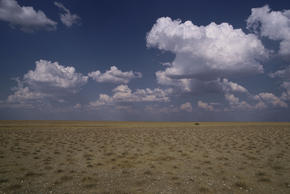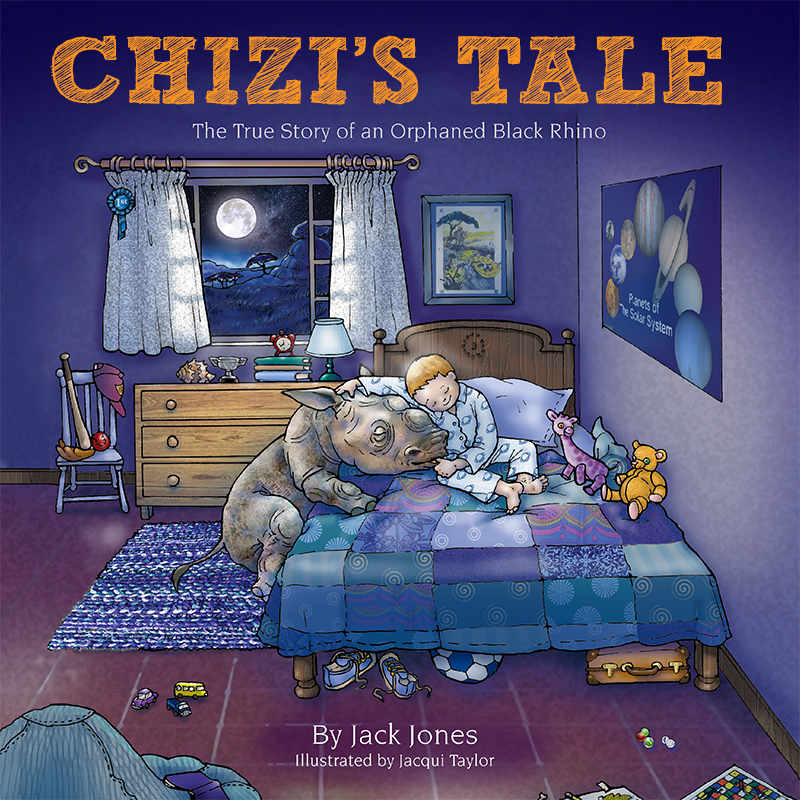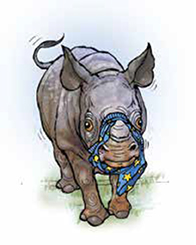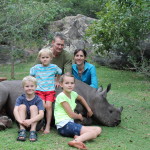The black rhinoceros or hook-lipped rhinoceros is a species of rhinoceros, native to eastern and central Africa including Kenya, Tanzania, Cameroon, South Africa, Namibia, Zimbabwe, and Angola.
European hunters are responsible for the early decline of black rhino populations. It was not uncommon for five or six rhinos to be killed in a day for food or simply for amusement. European settlers that arrived in Africa in the early 20th century to colonize and establish farms and plantations continued this senseless slaughter. Most people regarded rhinos as vermin and exterminated them at all costs.
“DOOMED.” That was the front page headline of the UK newspaper, the Daily Mirror, in 1961, accompanied by a full-page photo of two African rhinos. The article said that rhinos were “doomed to disappear from the face of the earth due to man’s folly, greed, neglect” and encouraged readers to support a new conservation organization: WWF. We’ve been fighting to protect African rhinos ever since. Recent success in black rhino conservation is heartening, but a lot of work remains to bring the population up to even a fraction of what it once was – and ensure that it stays there.
Illegal Wildlife Trade
Black rhinos have two horns, and occasionally a third small posterior horn. The front horn is longer than the rear which makes them lucrative targets for the illegal trade in rhino horn. Between 1970 and 1992, 96 percent of Africa's remaining black rhinos were killed. A wave of poaching for rhino horn rippled through Kenya and Tanzania, continued south through Zambia's Luangwa Valley as far as the Zambezi River, and spread into Zimbabwe. Political instability and wars have greatly hampered rhino conservation work in Africa, notably in Angola, Rwanda, Somalia and Sudan. This situation has exacerbated threats such as trade in rhino horn, and increased poaching due to poverty.
Today, black rhinos remain Critically Endangered because of rising demand for rhino horn, which has driven poaching to record levels. A recent increase in poaching in South Africa threatens to erase our conservation success. The increase is driven by a growing demand from some Asian consumers, particularly in Vietnam, for folk remedies containing rhino horn. A total of 333 rhinos were killed in South Africa in 2010 – almost one a day

Today, black rhinos remain Critically Endangered because of rising demand for rhino horn, which has driven poaching to record levels. A recent increase in poaching in South Africa threatens to erase our conservation success. The increase is driven by a growing demand from some Asian consumers, particularly in Vietnam, for folk remedies containing rhino horn. A total of 333 rhinos were killed in South Africa in 2010 – almost one a day
Flying Rhinos
In October 2011, WWF helped to successfully establish a new black rhino population in a safer, more spacious location. Nineteen critically endangered black rhinos were transported via helicopter to a land vehicle. They spent less than 10 minutes in the air and the sedated animals woke up in a new home. Translocations reduce pressure on existing wildlife reserves and provide new territory where rhinos have a greater opportunity to increase in number. Creating more dispersed and better protected populations also helps keep rhinos safe from poachers. This work was done by the Black Rhino Range Expansion Project (BRREP), a partnership between WWF-South Africa, Ezemvelo KZN Wildlife and Eastern Cape Parks and Tourism
Monitoring and Protection

Etosha National Park, Namibia.
To monitor and protect black rhinos WWF focuses on better-integrated intelligence gathering networks on rhino poaching and trade, more antipoaching patrols and better equipped conservation law enforcement officers. Namibia has one of the largest black rhino populations in the world, with a majority found in Etosha National Park. Although their numbers are increasing, the black rhino is still under threat, particularly as Asian demand for rhino horn skyrockets. WWF works with Namibia’s wildlife services in Etosha to protect the country’s endangered black rhino population. This is being done through effective security monitoring, better biological management and wildlife-based tourism, with proceeds going directly back into conservation efforts.
Tackling Illegal Wildlife Trade
WWF is setting up an Africa-wide rhino database using rhino horn DNA analysis (RhoDIS), which contributes to forensic investigations at the scene of the crime and for court evidence to greatly strengthen prosecution cases. In South Africa and Kenya, it has been circulated into law as legal evidence in courts and rhino management. This work is done with institutions like the University of Pretoria Veterinary Genetics Laboratory.
In Namibia, WWF we worked with the government and other partners to develop innovative new transmitters to track rhino movements and protect them against poaching. We also helped set up and promote a free and confidential phone hotline that allows people to inform the authorities about poaching safely and anonymously. WWF developed this tool with the Government of Namibia and Mobile Telecommunications Limited. Rhino poaching in Namibia is now at an all time low.
TRAFFIC, the world’s largest wildlife trade monitoring network, has played a vital role in bilateral law enforcement efforts between South Africa and Vietnam. This has gone hand-in-hand with written commitments to strengthen border and ports monitoring as well as information sharing in order to disrupt the illegal trade chain activities and bring the perpetrators to justice for their crimes against rhinos.
In Namibia, WWF we worked with the government and other partners to develop innovative new transmitters to track rhino movements and protect them against poaching. We also helped set up and promote a free and confidential phone hotline that allows people to inform the authorities about poaching safely and anonymously. WWF developed this tool with the Government of Namibia and Mobile Telecommunications Limited. Rhino poaching in Namibia is now at an all time low.
TRAFFIC, the world’s largest wildlife trade monitoring network, has played a vital role in bilateral law enforcement efforts between South Africa and Vietnam. This has gone hand-in-hand with written commitments to strengthen border and ports monitoring as well as information sharing in order to disrupt the illegal trade chain activities and bring the perpetrators to justice for their crimes against rhinos.
Effective Public-Private Partnerships
The Black Rhino Range Expansion Project (BRREP) was established in 2003 and is a partnership between WWF, Ezemvelo KZN Wildlife and Eastern Cape Parks and Tourism. This model for public-private partnership shares the responsibility of increasing the population of black rhinos in KwaZulu Natal and allows every partner to benefit. Since the project began in 2003, seven new black rhino populations have been created in South Africa on more than 37,000 acres of land. Nearly 120 black rhino have been translocated and more than 30 calves have been born on project sites.













